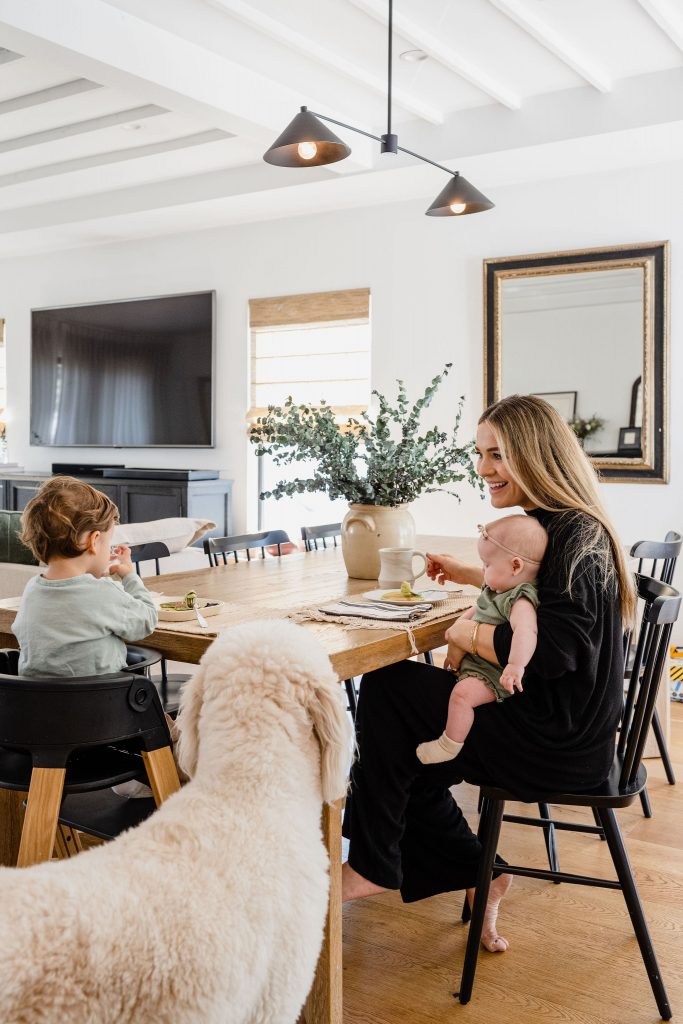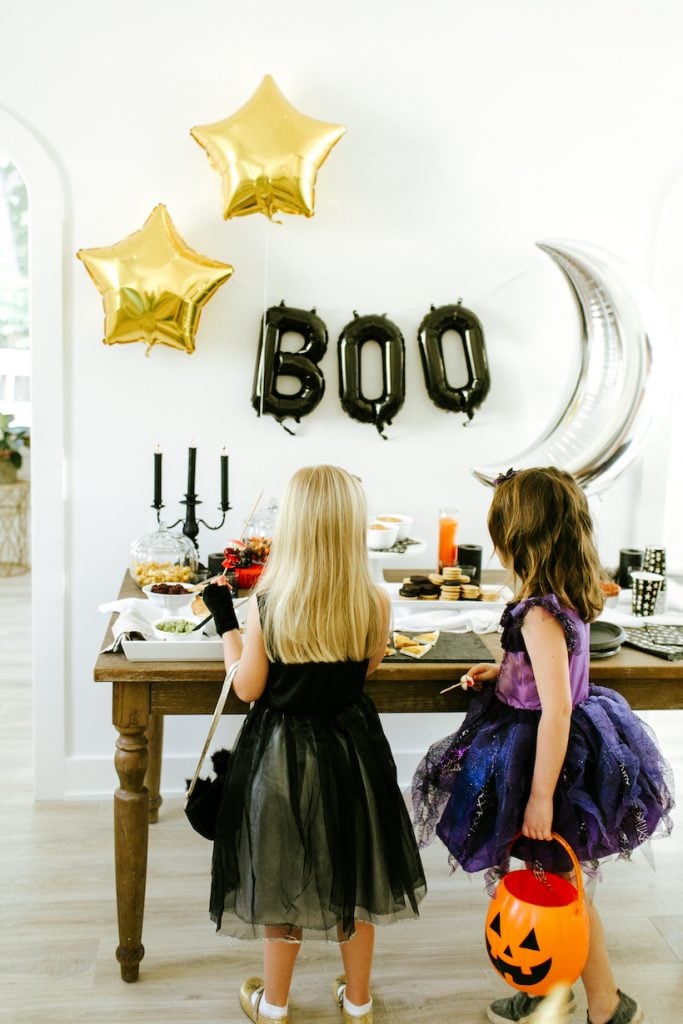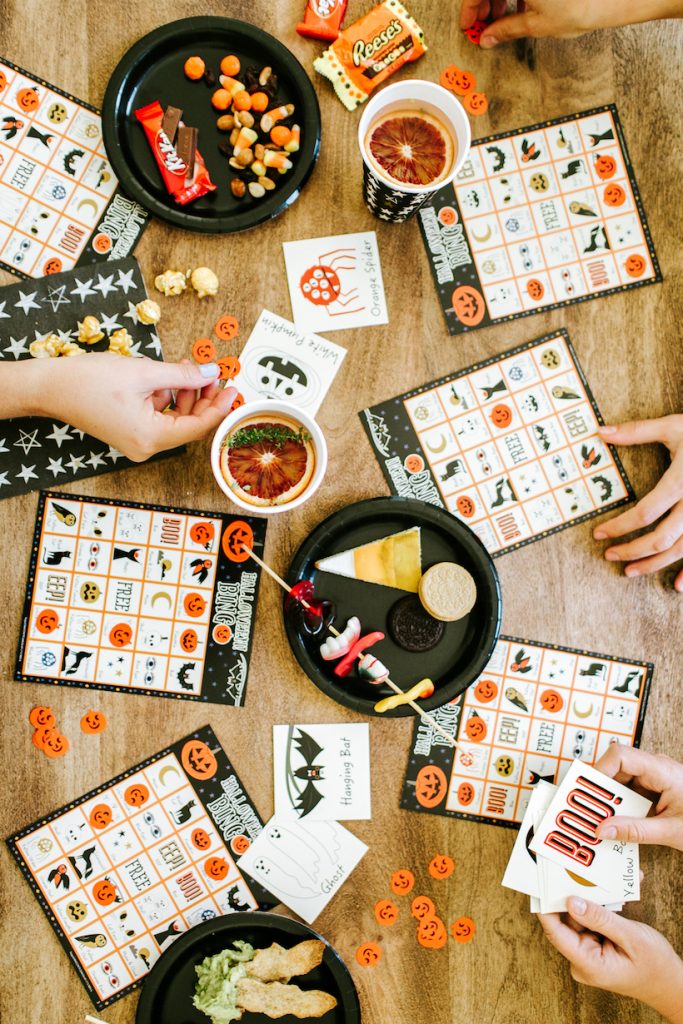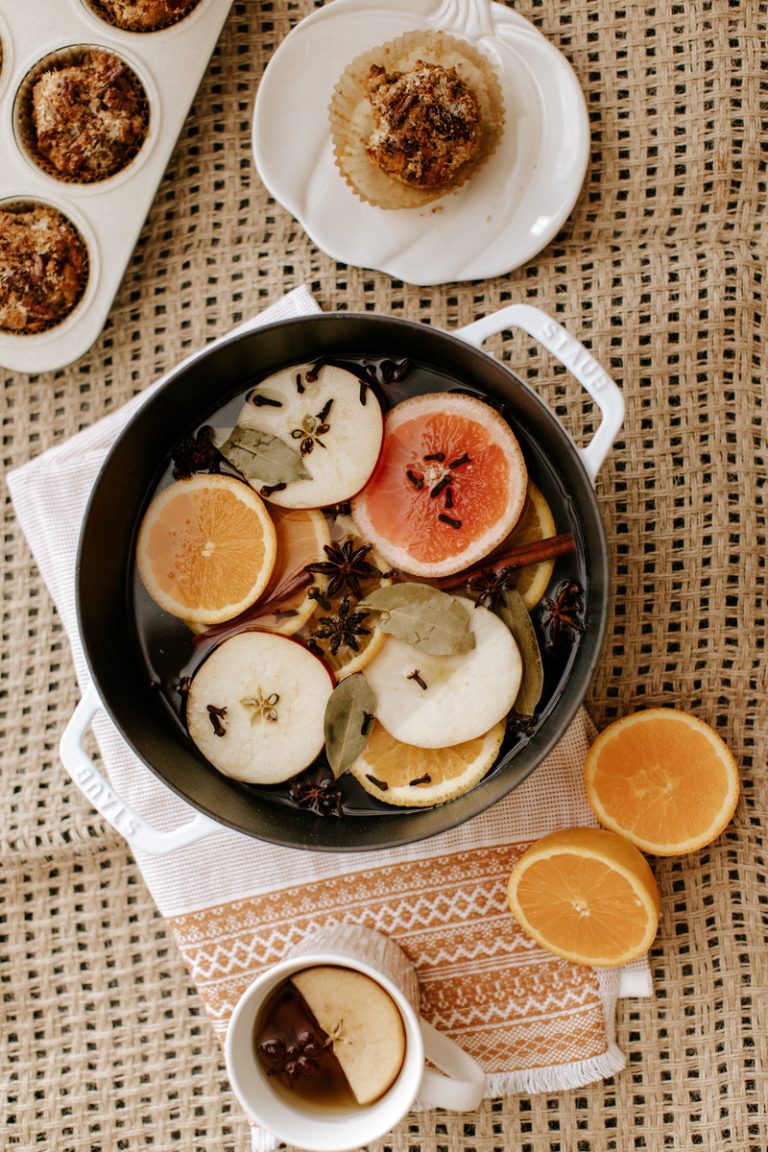
IMO, there’s nothing spookier than a toddler on a sugar high. From erratic mood swings to spastic energy (and an inevitable flop on the hardwood floor), a sugar-fueled child is not for the faint of heart. It’s no surprise that Halloween spooks most parents. Between consoling terrified children to minimizing a sugar overload, it can be a relatively stressful holiday. Luckily, not all hope is lost. No need to fear this spell-binding, spine-chilling holiday. Learn how to approach Halloween candy with kids for a festive, nostalgic experience.
Ultimately, parenting on Halloween is all about encouraging well-rounded eating habits and leading by example. Spoiler alert: the less emphasis you put on candy, the more success you’ll see around reducing your kids’ obsession with it.
Feature image of Brandy Joy Smith and family by Zachary Gray.

Subscribe
Get the goods.
Gatherings, food, design, wellness, and more—it's the newsletter you'll actually want to read.
Thanks for Signing Up!
Oops!
Looks like you’re already signed up or your email address is invalid.
Oops!
Looks like you unsubscribed before click here to resubscribe.
Children Are Intuitive Eaters
One of the most powerful things we can glean from our children is how in-tune they are with their hunger cues. Despite their mealtime fussiness, they’re intuitive eaters. Therefore, it’s our responsibility to model healthy behaviors around food—especially on holidays, like Halloween. It’s also our duty to give them the space to eat unconditionally. In turn, they can develop a healthy relationship with food (and a mindful relationship with sugar). In the spirit of wholesome parenting, Halloween is a wonderful opportunity to approach treats with ease and empowerment. It’s not all or nothing.
Set Your Child Up To Have A Normal Relationship With Food
Before we get to how to approach Halloween candy with kids, let’s back up. While normal looks different for everyone, the gist is to raise children to have a mindful yet enjoyable (read: stress-free!) relationship with food—both on holidays and in general. Below are five tips to raise a habitual eater.
Strive to be a positive role model
Monkey see, monkey do. If you struggle with a healthy relationship with food, you might find it difficult to model that for your children. And that’s okay. A wonderful place to start is to not see our bodies as an enemy. Rather than strive for body positivity, strive for body neutrality around your kids. Sometimes, saying nothing is better than saying something.
Try not to use food as reward or punishment
Have you ever found yourself saying, “You can’t have ice cream unless you eat your broccoli,” or “If you misbehave, you can’t have a cookie.” Using food as a reward—or punishment—is so tempting. However, this automatically categorizes foods as good or bad. Non-food rewards, like special activities or a new bathtub toy, can be just as effective. Not using food as a reward or punishment also avoids putting foods into boxed categories—a mentality that can carry over into adulthood.
Let go of the clean plate club
Unfortunately, this forces kids to ignore their internal signals of fullness. Instead of being able to explore and enjoy the foods in front of them, children feel like they need to eat everything on their plate—often, to move on to dessert. They know when they are hungry and when they are full. They might gravitate toward some foods more than others. In that case, you can explore more foods, together.
Although some picky eating is common, extremely picky eating that persists for several months or more could be a sign of disordered eating. Parents who have concerns about their child’s eating patterns should consult a pediatrician or another health professional.
Prioritize family meals
Speaking of exploring foods, together, family meals are crucial for raising a normal eater. After all, they protect against disordered eating. Yes, that includes eating dessert together! This is a wonderful way to build family relationships, honor cravings, and more.
Be weight neutral
Rather than focus on your child’s size, which can (and will) change over time, try to be neutral. Note the diversity of bodies and how they naturally come in different shapes and sizes. Encourage children to eat a variety of foods and to do physical activities that bring them joy.
No Need To Be The Treat Police
So, how do you handle the abundance of candy with your little one(s)? Do you give them a certain number of pieces? Is it a free-for-all? Should they even go trick-or-treating? How to approach Halloween candy with kids may require trial and error, but there’s no need to act as the “Switch Witch,” “Treat Police,” or pretend Halloween never happened. That doesn’t teach kids anything—other than restriction, deprivation, and shame. Ultimately, the goal is to empower children to mindfully eat sugar and desserts, versus fearing and obsessing over treats, altogether.
How To Approach Halloween Candy With Kids
If you take one thing from this article, let it be this: don’t stress about Halloween candy!
Yes, that’s the silver bullet. In the grand scheme of things, the stress and pressure are unnecessary. Enjoy some with your kids while it’s in the house, then move on. All things considered, there aren’t an infinite number of Halloweens in your child’s life (or yours). Eventually, they’ll be too old for trick-or-treating—or simply disinterested in it.
1. When They Ask For Candy, Say Yes
As long as you’ve deemed it appropriate for your toddler to have added sugar or sweets, let your child enjoy a handful of candies. One night (or a few nights) of multiple candies will not ruin their long-term health—I promise! With toddlers, specifically, they’re still very good at eating intuitively and will stop when they’re full. Most young children will take two or three candies, and be done with it. They may even take a bite or two and then get distracted by something else.
2. Don’t Make A Big Deal Out Of It
The less of a deal you make out of it, the more you’ll see it’s not worth stressing over in the first place. Show your little one that candy is a food like any other food. Nothing special, nothing to get worked up over, nothing to put up on a pedestal—or conversely, nothing to be ashamed of when eating. Remember: food (including candy)—can be eaten strictly for enjoyment! Not everything we eat is tied to nutrition.
3. Engage In Conversation With Them
Encourage your kids to choose which candies they like. They can even make separate piles. This may seem obvious, but there’s no need to devour treats they don’t love. Furthermore, engage in conversation with them while they’re eating—ask them about the texture, colors, flavors, etc. Speaking of, no need to come from a “I told you so” perspective if they go overboard. Rather, help them observe what they feel in their body—and why. You can respond with, “I’m sorry your belly is hurting. Maybe, having that much candy made it upset. Let’s practice listening to your body and stopping before it hurts.”
4. Resume Your Mealtime Boundaries On November 1st
After Halloween, put the candy out of sight. Resume whatever strategies you’ve implemented when it comes to sugar and dessert. When in doubt, offer sweets alongside a meal or snack. That way, it’s treated like any other food. It’s a small portion on their plate and offered among a variety of other nutritious options.As a parent, you choose when to offer candy rather than give it anytime your child asks for it. Explain that it’s not going to disappear forever after October 31st. You can all enjoy it, in moderation, to keep the Halloween spirit alive.
Halloween Blood Sugar Hacks
Last but not least, a few Halloween blood sugar hacks! To help minimize sugar rushes (and crashes), aim to have a filling and nutrient-dense dinner before trick-or-treating. Rather than set your child up with an empty belly before a night full of candy, peek these easy, weeknight dinner recipes. Opt for a good source of protein (animal or plant-based), fat (avocado, cheese, olive oil, etc.) and fiber (carrots, broccoli, cauliflower, etc.). When you’re out trick-or-treating, bring water with electrolytes with you. Stay hydrated, and encourage your kids to do the same. Feel free to bring a nourishing yet sweet snack, too!
The post Parents, Rejoice: How To Approach Halloween Candy Without Being The Treat Police appeared first on Camille Styles.








0 Comments